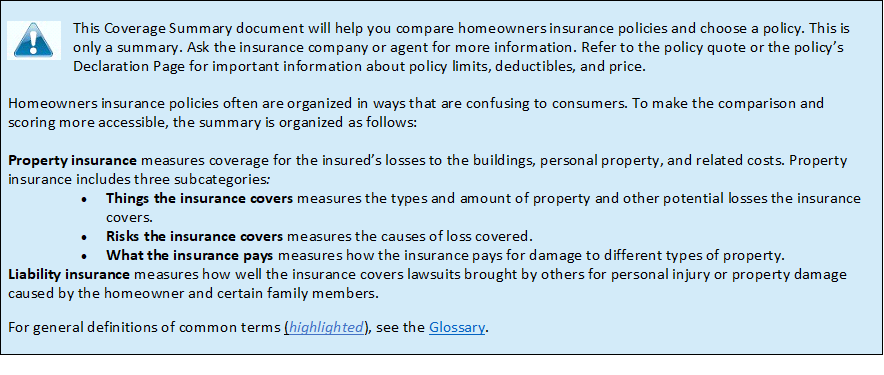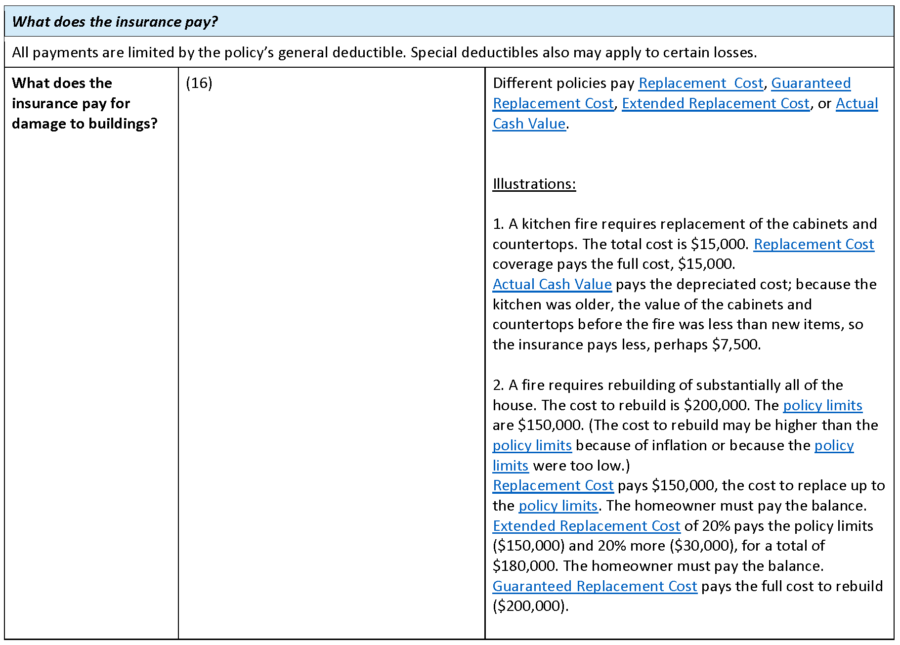The Homeowners Insurance Coverage Summary provides a template for a summary of key terms of homeowners insurance policies, in a form accessible to consumers.

Homeowners need easily understandable information about insurance policies in order to evaluate their current coverage and to shop effectively for insurance.
But insurance is the only product for which consumers don’t know what they are buying before they buy it. Insurance companies almost never provide copies of policy language or complete summaries of policy terms to prospective policyholders, and most state insurance regulators don’t require insurers to make policies readily available.
Even if consumers had access to policies, most of them wouldn’t read or couldn’t understand the long, complex, legal documents, or be able to anticipate the many ways in which a loss might occur or the problems that may result if it does.
Yet homeowners insurance policies vary widely among companies in what things and risks they cover—and don’t cover—and what they pay for losses. Many people only discover the limitations of their coverage when they have a claim and often find they don’t have adequate coverage.
Therefore, there is a need for an accessible way for homeowners to evaluate and compare homeowners insurance policies–the Homeowners Insurance Coverage Summary .
The Affordable Care Act requires group health plans and health insurance issuers in the group and individual markets to provide a Summary of Benefits and Coverage that explains in simple terms the benefits available under their plans to help consumers better understand their health coverage and to compare plans. The regulations under the ACA specify the template for the SBC that includes prescribed Important Questions, Answers, and Why This Matters, and instructions for completing the template as to form and content.
We have used the SBC form to the extent possible. In addition to basic elements, the SBC includes Coverage Examples (e.g., “Peg is having a baby” and “Managing Joe’s Type 2 Diabetes.”) We have included a few Illustrations to provide similar information.
The project documents include a Blank Template, Template with Options that prescribes the answers in standard form, a Sample Completed Template, and a Glossary.
Here is the introduction to the Coverage Summary:

Here is an example of one of the entries in the Coverage Summary:

For more, including the complete template, read the full report
